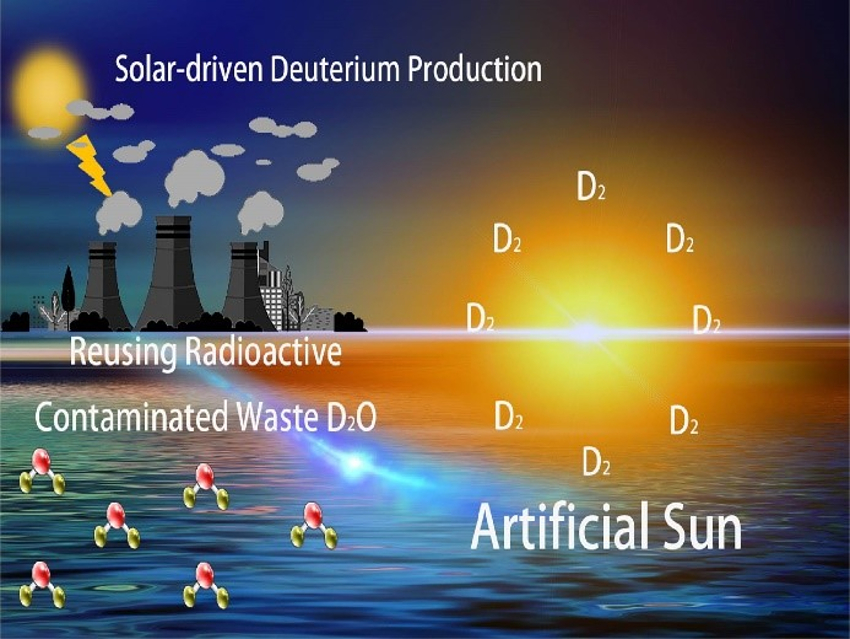Deuterium is an important element, e.g, in nuclear, medical, and life sciences. However, as a naturally occurring hydrogen isotope, deuterium has a low abundance (150 ppm). Separating deuterium from hydrogen is challenging because of the nearly identical physicochemical properties of the two isotopes. Current technologies for deuterium production have poor separation capabilities and high energy costs. Therefore, there is a need for cost- and energy-efficient deuterium-generation technologies.
Gongchang Zeng, Shaobin Huang, South China University of Technology, Guangzhou, Heping Zeng, South China University of Technology and South China Normal University, Guangzhou, and colleagues have developed a sustainable, solar‐driven photocatalytic strategy to extract deuterium from heavy water (D2O). The team used a MoS2–Cd0.5Zn0.5S hybrid catalyst, which has a good photocatalytic performance for hydrogen evolution. The catalyst was prepared via a solvothermal synthesis and then suspended in a D2O solution of Na2SO3 and Na2S. The suspension was irradiated with simulated sunlight and kept at room temperature. The produced gases were analyzed using gas chromatography.
The team found that the catalyst system can efficiently generate deuterium at a high rate of up to 9.745 mmol g−1 h−1. Because D2O is needed to run certain nuclear reactors, the nuclear industry creates radioactively contaminated D2O waste. This waste is currently challenging to recycle. The researchers believe that photocatalytic D2O splitting could be used to convert contaminated D2O into a useful product.
- A promising alternative for sustainable and highly efficient solar-driven deuterium evolution at room temperature via photocatalytic D2O splitting,
Gongchang Zeng, He-ping Zeng, Lisan Niu, Jiayi Chen, Ting Song, Piyong Zhang, Yixiao Wu, Xinyan Xiao, Yongqing Zhang, Shaobin Huang,
ChemSusChem 2020.
https://doi.org/10.1002/cssc.202000562




